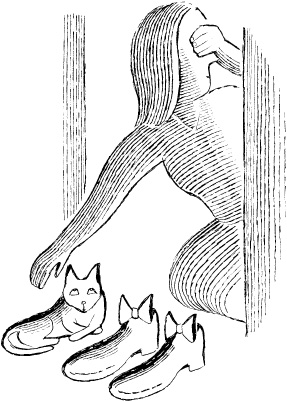
All of us have our morning rituals to get us quickly and “mindlessly” out the door. These set routines allow the brain to go on automatic pilot and be more efficient. And at bedtime, when we need to wind down from a day of mental and physical exertion, routines are similarly comforting.

Because routines are so ingrained in our mornings and evenings, they’re ideal times to inject a bit of novelty to awaken new brain circuits.
To change your usual morning olfactory association—waking to the smell of freshly brewed coffee—wake up to something different—vanilla, citrus, peppermint, or rosemary.
Keep an extract of your favorite aroma in an airtight container on your bedside table for a week and release it when you first awaken, and then again as you bathe and dress.
Odds are you can’t remember specifically when you “learned” to associate the smell of coffee with the start of a day. By consistently linking a new odor with your morning routine, you are activating new neural pathways.

Locate the taps and adjust the temperature and flow using just your tactile senses. (Make sure your balance is good before you try this and use common sense to avoid burning or injury.) In the shower locate all necessary props by feel, then wash, shave, and so on, with your eyes shut. Your hands will probably notice varied textures of your own body you aren’t aware of when you are “looking.”
Even though it is probably the least intrusive or time-consuming Neurobic suggestion, this shower exercise will wake up the brain as described in “How Neurobics Works,” pages 35-38.
 Variation: Combine Exercises #2 and #4 by laying out your wardrobe the night before (or have someone lay it out for you). Then with your eyes closed, use only tactile associations to distinguish and put on pants, dress, socks, or panty hose, etc.
Variation: Combine Exercises #2 and #4 by laying out your wardrobe the night before (or have someone lay it out for you). Then with your eyes closed, use only tactile associations to distinguish and put on pants, dress, socks, or panty hose, etc.
Brush your teeth with your nondominant hand (including opening the tube and applying toothpaste). You can substitute any morning activity—styling your hair, shaving, applying makeup, buttoning clothes, putting in cuff links, eating, or using the TV remote.
This exercise requires you to use the opposite side of your brain instead of the side you normally use. Consequently, all those circuits, connections, and brain areas involved in using your dominant hand are inactive, while their counterparts on the other side of your brain are suddenly required to direct a set of behaviors in which they usually don’t participate. Research has shown that this type of exercise can result in a rapid and substantial expansion of circuits in the parts of the cortex that control and process tactile information from the hand.

Variation: Use only one hand to do tasks like buttoning a shirt, tying a shoe, or getting dressed. For a real workout, try using just your nondominant hand.
Another exercise that associates unusual sensory and motor pathways in your cortex with a routine activity is to use your feet to put your socks and underwear in the laundry basket or pick out your shoes for the day.

Without looking, choose clothing, shoes, and so on, with matching or contrasting textures. For example, make it a silky, smooth day or a rough, nubby day. Use not only your fingers but also your cheeks, lips, and even your feet—they’re all packed with receptors for fine touch.
Extensive practice using the fingers to make fine distinctions between objects or textures causes expansion and rewiring of the brain areas involved in touch. This has been observed in monkeys trained to use their fingers to get food and in brain imaging experiments in blind human Braille readers.

Wear earplugs when you join the family for breakfast and experience the world without sound.
Has your spouse ever complained that you are only “half-listening”? If you’re in the middle of a morning routine, it’s probably true. By virtue of ingrained routines, your brain has a pretty good idea of what to expect each morning, so only a few words are enough for you to follow a sentence. And, engrossed in a newspaper or listening to the radio, you “tune out” most other sensory inputs. Blocking a major sensory route by wearing earplugs forces you to use other cues to accomplish even simple tasks like knowing when the toast is done or passing the sugar bowl.
We wouldn’t recommend trying all these things on the same morning, but do incorporate one or two of the following:
 Vary the order in which you do your normal routine (e.g., get dressed after breakfast).
Vary the order in which you do your normal routine (e.g., get dressed after breakfast).
 If a bagel and coffee is your daily fare, try something else like hot oatmeal and herbal tea.
If a bagel and coffee is your daily fare, try something else like hot oatmeal and herbal tea.
 Change the setting on your radio alarm or tune into a morning TV program you never watch. Sesame Street, for example, may arouse the brain to notice how much of what you take for granted is explored in depth by children.
Change the setting on your radio alarm or tune into a morning TV program you never watch. Sesame Street, for example, may arouse the brain to notice how much of what you take for granted is explored in depth by children.
 Walk the dog on a new route. (Yes, you can teach old dogs new tricks.)
Walk the dog on a new route. (Yes, you can teach old dogs new tricks.)
Brain imaging studies show that novel tasks activate large areas of the cortex, indicating increased levels of brain activity in several distinct areas. This activity declined when the task had become routine and automatic. Much greater “brain power” is exerted for novel verses automatic (rote) tasks.
At the end of the day, when you want to wind down, try something relaxing and Neurobic, such as a warm bath. Use a variety of sensory stimuli—aromatic bath oils and soaps, sponges, loofah, body scrubs, candlelight, champagne or tea, music, plush towels, and moisturizer. Luxuriate in a cavalcade of scents, textures, and lighting to create linkages between old and new associations.

Certain odors evoke distinct moods (alertness, calmness, etc.) in many people. In a Neurobic bath, simply by pairing a specific odor and/or music with an enjoyable, relaxing activity, you form a useful stress-relieving association that can be tapped simply by smelling the aroma or hearing the melody again.
Read aloud with your partner. Alternate the roles of reader and listener. It may be a slow way to get through a book, but it’s a good way to spend quality time and gives you something to discuss other than your day at work.
When we read aloud or listen to someone reading, we use very different brain circuits than when we read silently. One of the earliest demonstrations of brain imaging clearly showed three distinct brain regions lighting up when the same word was read, spoken, or heard. For example, listening to words activated two distinct areas in the left and right hemispheres of the cortex, while speaking words activated the motor cortex on both sides of the brain as well as another part of the brain called the cerebellum. Just looking at words activated only one area of the cortex in the left hemisphere.
Many of the techniques we’ve suggested in other sections of this book, like shutting one’s eyes to heighten sensation in other senses, are an intuitive part of sexual exploration. Novelty—the thrill of the new—plays a central role in sexual arousal. Especially in a long-term marriage, the challenge (and fun) of lovemaking is finding ways to make each time with one’s partner a fresh adventure.
Use your imagination and pull out all the sensory stops…wear silk, strew the bed with rose petals, burn lavender incense, have chilled champagne, massage with perfumed oils, put on a romantic CD…and whatever else turns you on.
To think that a good sexual encounter also helps keep the brain alive is almost too good to be true. But it is; more than most “routine activities,” sex uses every one of our senses and, of course, engages our emotional brain circuits as well.